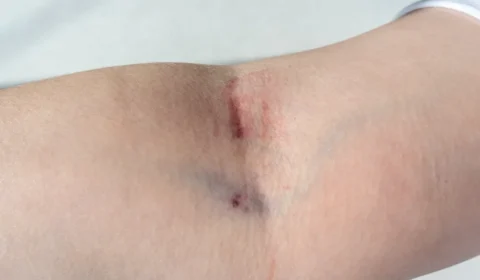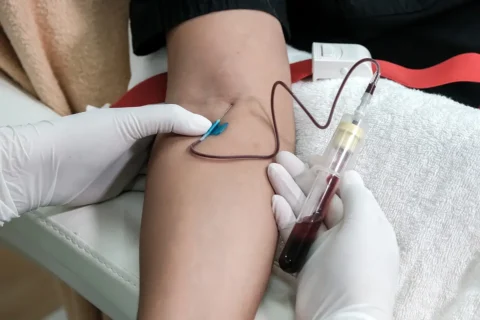Is Tirzepatide the new hope against diabetes and obesity?
Tirzepatide is a promising new drug that simultaneously activates two key receptors involved in blood sugar control and appetite regulation – the GIP and GLP-1 receptors.
This dual mechanism of action provides a powerful one-two punch against diabetes and obesity.
Mechanism of Action: A Dual Receptor Activator
Tirzepatide exerts its effects by activating both the GIP and GLP-1 receptor systems in the body. It was engineered to be an imbalanced agonist, favoring activation of the GIP receptor over the GLP-1 receptor.
At recommended therapeutic doses, tirzepatide engages the GIP receptor more extensively than the GLP-1 receptor. However, both receptors work in tandem to enhance insulin secretion from the pancreas.
Tirzepatide mimics the natural signaling of GIP at the GIP receptor. However, at the GLP-1 receptor, it displays biased signaling – preferentially activating the cAMP pathway over other signaling channels. Tirzepatide also doesn’t internalize the GLP-1 receptor as effectively as natural GLP-1.
This biased signaling profile may work to our advantage by removing restraints on insulin secretion. By modifying the rules of GLP-1 receptor activation, tirzepatide can provide improved efficacy against diabetes and obesity.
Pharmacokinetics: Long-Lasting Effects
Tirzepatide was designed for longevity, like a marathon runner able to go the distance. It has a fatty acid chain that binds to proteins in the bloodstream, allowing it to stick around longer.
This albumin binding helps provide a half-life of 5 days – long enough to make it a once-weekly medication. Tirzepatide can maintain its effects with just one dose per week, offering convenient and sustained benefits.
It provides the receptors a steady supply of stimulation, like a continuous IV drip of medication. This prolonged exposure may enhance its ability to improve blood sugar control and induce weight loss compared to short-acting drugs.
The weekly dosing schedule also leads to higher patient compliance. No longer does a medication regimen have to be integrated into a daily routine. Patients can set it and forget it with just one dose each week.
Efficacy: A Heavy-Hitting Contender
In the ring against diabetes and obesity, tirzepatide packs a powerful punch. Clinical trial data has shown it to be a real heavyweight contender against these diseases.
Tirzepatide has demonstrated superior efficacy compared to medications that target only one of its receptor targets. It can deliver a knockout blow to high blood sugar, reducing HbA1c levels substantially more than current GLP-1 drugs alone.
This superior performance also carries over to body weight. In the battle of the bulge, tirzepatide can land significant blows, helping patients drop pounds beyond what’s achievable with other diabetes medications.
In addition to these heavyweight effects, tirzepatide also improves other markers affected by diabetes – lowering triglycerides and blood pressure. It’s like a mixed martial arts fighter able to take on multiple opponents.
Across clinical trials, the numbers speak for themselves:
- HbA1c reduced by up to 2%
- Body weight decreased by up to 15%
- Triglycerides lowered by 20-30%
Table showing weight loss results for the tirzepatide 15mg dose group over time:
| Time in Months | Mean % Change in Body Weight |
| 0 | 0% |
| 1 | -3% |
| 2 | -6% |
| 3 | -9% |
| 4 | -12% |
| 5 | -15% |
| 6 | -18% |
| 7 | -19% |
| 8 | -20% |
| 9 | -21% |
| 10 | -22% |
| 11 | -22% |
| 12 | -22% |
By leveraging the synergistic benefits of dual receptor agonism, tirzepatide displays a formidable efficacy profile in real-world use. It has the potential to be a prizewinning contender in diabetes and obesity management.
Safety and Tolerability: Mostly Minor Side Effects

In the ring, even strong contenders take some bumps and bruises. Likewise, tirzepatide can produce some mild side effects, though nothing too major or lasting.
Clinical trials have shown tirzepatide to be well tolerated overall. The most common adverse effects are gastrointestinal in nature – nausea, vomiting, and diarrhea.
For most patients these are mild or moderate and improve with continued treatment. It’s like getting your sea legs adjusting to a boat’s rocking waves.
Unlike many diabetes medications, tirzepatide does not commonly cause hypoglycemia, or dangerously low blood sugar levels. Its glucose-lowering effects scale down when blood sugar is already low, avoiding a knockout crash.
While no drug is completely free of risks, tirzepatide has demonstrated a good safety profile. Its benefits seem to outweigh the negatives for most people, especially when adverse effects diminish over time.
Species Differences: Of Mice and Men
Sometimes animal testing doesn’t tell the whole story for human therapies. When it comes to tirzepatide, mouse studies don’t fully reflect results in human trials.
In mice, tirzepatide has reduced potency for the GIP receptor compared to humans. Very high doses are needed to activate mouse GIP receptors, whereas human GIP receptors are readily engaged.
At normal doses in mice, tirzepatide acts mostly through GLP-1 receptors. But we can’t judge a book by its mouse-cover. Human results show tirzepatide utilizing both receptor systems, not just GLP-1.
So while mouse experiments provide useful early data, they have limitations in mimicking the balanced dual agonism seen clinically with tirzepatide. As the saying goes, “Mice lie and monkeys exaggerate.”
When evaluating this drug, we have to look at the results from human cell studies and clinical trials. That’s where we see the full spectrum of tirzepatide’s pharmacology shine through.
Activity in Human Cells: A Balanced Act
To really understand tirzepatide, we have to look at how it functions in human cells. Experiments in donated human islets reveal more about tirzepatide’s teamwork.
In these mini-organs, both GIP and GLP-1 receptors need to be activated for tirzepatide’s full insulin-releasing effects. Blocking the GIP receptor lowers the insulin response substantially, while GLP-1 inhibition only blunts it partially. Like a game of doubles tennis, both partners are required on the court.
Interestingly, the relative roles of each receptor vary from person to person. In some, GIP does the heavy lifting, while in others, GLP-1 provides more of the insulin-secreting stimulus. Tirzepatide adapts to this inherent variability.
Beyond insulin release, tirzepatide also increases glucagon and somatostatin secretion from human islet cells. This demonstrates it engages both receptor systems to influence multiple hormones.
By studying isolated human islets, we see that tirzepatide performs a delicate balancing act, utilizing both GIP and GLP-1 receptors in tandem. The duo synergizes their efforts, overcoming genetic differences amongst people.
Frequently Asked Questions on How Does Tirzepatide Work
What is an insulinotropic polypeptide?
An insulinotropic polypeptide is a hormone that can stimulate insulin production. GIP and GLP-1 are two examples of insulinotropic polypeptide hormones.
How effective is tirzepatide for patients with type 2 diabetes?
In clinical trials, tirzepatide has shown impressive efficacy in patients with type 2 diabetes. It can lower HbA1c levels significantly more than other medications.
Who makes tirzepatide?
Tirzepatide was developed and is manufactured by the pharmaceutical company Eli Lilly.
What kind of weight loss is seen in people with type 2 diabetes taking tirzepatide?
In clinical trials, people with type 2 diabetes taking tirzepatide lost on average 10-15% of their body weight over 6 months. This amount of weight loss is greater than typically seen with other diabetes medications.
How does tirzepatide compare to GLP-1 receptor agonists?
Tirzepatide has shown greater efficacy than GLP-1 receptor agonists alone for improving markers of diabetes, including higher reductions in HbA1c and body weight.
Should I talk to my healthcare provider about tirzepatide?
You should discuss with your healthcare provider if tirzepatide may be an appropriate treatment option for your individual health needs and goals.
Is tirzepatide approved for treating obesity?
Tirzepatide was recently approved by the FDA for chronic weight management in adults with obesity. This makes it one of the few medications with a label for weight loss.
How does tirzepatide stimulate insulin production?
By activating GIP and GLP-1 receptors, tirzepatide triggers signaling pathways that lead to increased insulin release from pancreatic beta cells. This improves insulin production in people with type 2 diabetes.
What are the common side effects of tirzepatide?
Some of the commonly reported side effects of tirzepatide include nausea, vomiting, diarrhea, and decreased appetite. These are usually mild to moderate and decrease over time.
What are incretin hormones?
Incretin hormones like GIP and GLP-1 are released from the gut in response to food intake. They stimulate insulin secretion and play a key role in blood sugar regulation.
Is tirzepatide an effective weight loss drug?
Yes, tirzepatide has been shown to be effective for weight loss and chronic weight management when combined with lifestyle interventions.
How much weight loss is seen with tirzepatide?
In clinical trials, tirzepatide has helped overweight or obese adults lose on average 15-20% of their body weight over 6-12 months.
Does tirzepatide improve insulin sensitivity?
Yes, in addition to increasing insulin production, tirzepatide has been shown to improve insulin sensitivity in people with type 2 diabetes. This also contributes to better blood sugar control.






